The best home security camera in Australia for 2023
Keep a watchful eye around the home when you're away
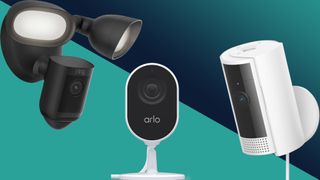
1. The list in brief
2. Best indoor
3. Best premium indoor
4. Best indoor with face recognition
5. Best budget outdoor
6. Best outdoor with lights
7. Best premium outdoor
8. Best for versatility
9. Best solar-powered
10. How to choose
11. How we test
12. FAQ
13. Latest updates
The best home security cameras are a reliable way to grant you some peace of mind when it comes to the most important thing – the safety of your family. With options for indoors, outdoors or both, these top security cams will alert you and keep you updated on any activity occurring in or around your property.
While they can resemble more elaborate CCTV systems, they're much cheaper and easier to install and maintain, with many also capable of integrating with other smart home devices around your house.
As technologies and demand continue to develop, the number of home security options will only continue to grow, making choosing the right camera or system for you more challenging – which is why we're here to help. We've extensively tested all the devices below, assessing factors such as video and audio quality, motion sensor effectiveness and other features including corresponding apps where applicable.
Read on to discover the best security cameras for protecting your home below.
The quick list
Below you'll find a quick round up of our picks for the best home security cameras in 2023. We've picked a range of models, catering to both indoor and outdoor uses, along with keeping a range of budgets in mind. You can click through to read further reviews of each model and view the latest prices using our price comparison tool.
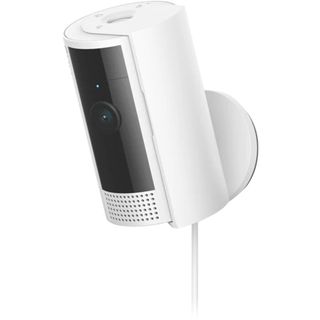
Best overall
Offering clear Full HD video, accurate motion detection and a near-foolproof user experience, we've yet to find a more complete indoor security camera package.
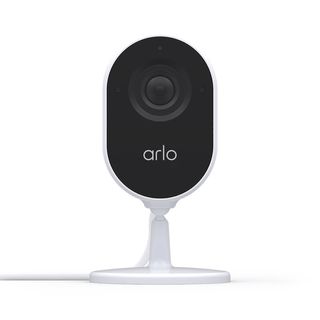
Best premium indoor
Mains power, a privacy filter to alleviate concerns of hackers seeing through its lens and compatibility with Amazon Alexa and Google Assistant makes the Arlo Essential a good buy. We just wish the near-essential features weren't part of a paid subscription.

Best for facial recognition
Facial recognition comes free with Swann's indoor security camera and it plays nicely with Google Assistant and Amazon Alexa. Full HD footage is crisp and clear, too. Battery-only power lets it down slightly, however.

Best budget outdoor
You'll get clear HD footage day and night from this Wyze outdoor security camera, along with 14 days free cloud storage and microSD storage as a bonus.

Best with lights
If you have existing wiring in place, then the Ring Floodlight Cam is the best outdoor security you'll be able to install, thanks to clear footage and two bright floodlights illuminate wherever they're pointing.
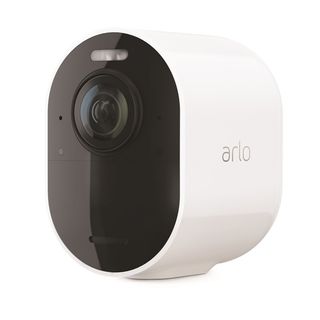
Best premium outdoor
4K recording is the headline feature here, resulting in crystal clear video both day and night. You also get microSD storage for saving video, but viewing footage in the app costs extra. It's not cheap either, but the investment may be worthwhile for your home.
Reveal the next 2 products...
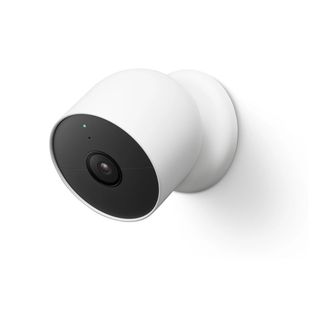
Best versatile
Thanks to a rechargeable battery, the Google Nest Cam can be used both indoor and outdoor. Daytime footage is clear, but nighttime footage has to be in black and white. An extra subscription is needed for viewing footage back at a later date, too.
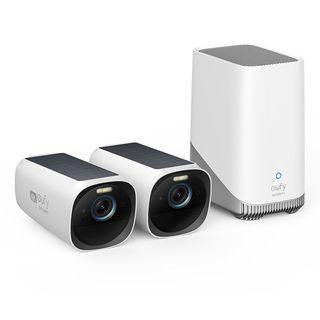
Best solar-powered
There's no ignoring the fact this security camera from Eufy is expensive, but with no ongoing subscription fees, effective AI smarts and solar power removing the need for wiring or batteries, it's one of the most accomplished home security systems money can buy.
The best home security cameras in Australia for 2023
Why you can trust TechRadar
Below you'll find more in-depth reviews of our picks for the best home security cameras in Australia. You can click through to read the full reviews of each model, written by TechRadar's team of smart home security camera experts.
The best indoor security camera overall

Specifications
Reasons to buy
Reasons to avoid
Following a ‘if it ain’t broke…’ mantra, not much has changed in the second-generation Ring Indoor Cam compared to its predecessor, but then, not much really did need changing. The main differences in the latest model are more aesthetic and cosmetic, and include a new ball joint that allows it to be far more flexible with positioning.
The other new addition here is a privacy plate, that can slide over the camera and microphone when not in use, to keep your home and family hidden should anyone manage to hack their way inside. Do keep in mind that you need to move the privacy plate yourself, rather than it being automated, which can influence where you place it in your home. Also on the subject of placement, Ring has maintained a mains-power-only approach with the latest model, too.
Elsewhere it’s business as usual. A wide field of view and pleasing detail and colour to footage recorded. But, the best and most useful features are hidden behind a paid subscription model.
Read our full Ring Indoor Cam (2nd Gen) review
The best premium indoor security camera
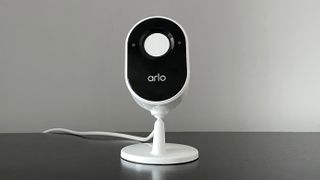
Specifications
Reasons to buy
Reasons to avoid
Privacy is a huge concern for many when choosing a home security camera. But, if the thought of the camera in your home watching your every move is too much to bear, the Arlo Essential Indoor Camera will be right up your street.
The privacy shutter can automatically be activated when the camera is disarmed, ensuring that the lens and microphone are disabled so there’s no fear of being watched.
On test, we found the camera recorded clear full HD footage during the day and at night, although you will need to subscribe to Arlo Secure, which costs a monthly fee if you want to review footage after it’s been recorded. On top of that, it works with Alexa and Google Assistant, although it lacks HomeKit support.
However, while the Arlo Essentials range is billed as the brand’s affordable offering, it’s more expensive than most affordable home security cameras.
Read our full Arlo Essential Indoor Camera review
The best indoor security camera for facial recognition
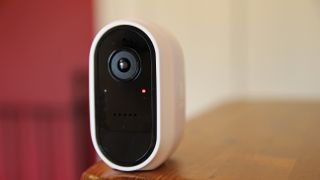
Specifications
Reasons to buy
Reasons to avoid
This Swann home security camera is a good option for facial recognition in the home because you get it for free (on subscription with other such as Google Nest Cam) and seven days' cloud storage.
On test, we found the Full HD footage captured by the camera was clear both during the day and at night, although with no built-in spotlights, it's only in black and white at night. Even better, the camera integrates with both Alexa and Google Assistant.
Unfortunately, the battery is built-in to the camera, so you can't use it while it is charging, unlike the cameras that offer swappable batteries - unless you opt for the additional solar panel. We also found that the magnetic mount wasn't as secure as those provided by some rivals, especially if you plan to mount the camera outside within reach. That said, it's excellent value for money.
Read the full Swann Wire-Free 1080p Security Camera review
The best budget outdoor security camera

Specifications
Reasons to buy
Reasons to avoid
If you're looking for an outdoor home security camera on a budget, you'll be hard pushed to do better than the Wyze Cam v3.
This full HD camera records clear footage during the day and at night and comes with free cloud storage for up to 14 days and a Micro SD card slot for local storage, making it a more than worthy competitor to other budget cameras.
It's one of the few outdoor home security cameras with an integrated stand, so it doesn't have to be mounted to a wall, although it can be if you'd prefer. That said, it requires a power outlet rather than a rechargeable battery, which may limit outdoor use depending on your setup.
However, if you're not willing to pay for a monthly subscription, you'll miss out on person detection, and on test, we found it unreliable when detecting unusual sounds and motion.
Read our full Wyze Cam v3 review
The best outdoor security camera with lights
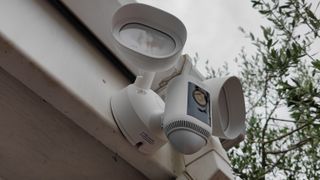
Specifications
Reasons to buy
Reasons to avoid
If you're seeking the best outdoor home security camera for your garden, the Ring Floodlight Cam Wired Pro is the best on the market. The Full HD camera, which records clear video during the day and at night, is flanked by two 1,000-lumen spotlights that can be set to bathe your yard in light if motion is detected, deterring any would-be intruders.
A built-in laser enables several handy smart features, such as 3D Motion, that only alert you about motion when the source has passed a set threshold to ensure unwanted alerts do not plague you. As Ring is an Amazon-owned company, it ingrates with Alexa too.
However, it's not perfect. It requires existing mains wiring for a sensor light, which may mean you need an electrician to install the camera for you, and, like all Ring cameras, there's no free video dotage. To review the footage later, you will need a Ring Protect subscription.
Read our full Ring Floodlight Cam Wired Pro review
The best premium outdoor security camera
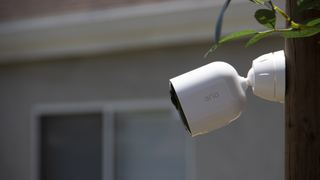
Specifications
Reasons to buy
Reasons to avoid
Looking for a home security camera that ensures tiny details are visible in the footage it records, even if the camera's field of view is in a large area. The Arlo Ultra 2, which records in 4K, offers just this and is excellent for mounting high-up on your property, for example looking over your driveway, ensuring you can still read a car number plate on the drive.
The footage the Arlo Ultra 2 records is extremely clear and detailed and in colour during the day and night, thanks to a built-in LED. It builds on the Arlo Ultra with support for both 2.4GHz and 5GHz Wi-F bands and an increased range, which should end connectivity issues. It's also compatible with Alexa, Google Assistant, and HomeKit, and has a range of smart features that help reduce the number of alerts the camera sends you.
However, the Arlo Ultra 2 will set you back a fair amount (it comes in different camera configurations). If you want to store video to review later, you'll need to subscribe to Arlo Secure at an extra monthly cost if you continue keeping footage in 4K and using the various smart features. There is the ability to store footage locally on a micro SD card in the base station, but you can't view these videos through the Arlo app.
If that's slightly out of your price range, consider the Arlo Pro 3, which also comes with a base station for local storage, or the Arlo Pro 4, which connects directly to your home Wi-Fi network. Both these Arlo cameras record in 2k, so they still offer detailed footage but are more affordable.
Read our full Arlo Ultra 2 review
The best versatile security camera
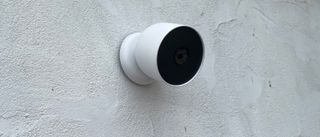
Specifications
Reasons to buy
Reasons to avoid
The Google Nest Cam (battery) is a versatile home security camera that you can use outside or indoors thanks to its rechargeable battery. It also benefits from superb facial recognition, but unlike the Swann Wire-Free 1080p security camera (above), it requires a monthly subscription.
On test, we found this home security camera was simple to use and recorded clear colour footage during the day, although the lack of a built-in spotlight meant video recorded at night was in black and white. Unsurprisingly, it offers Google Assistant integration and even comes with three hours of free storage. However, if you want to review footage captured by the camera after that point, you will need to invest in a Nest Aware subscription.
We were disappointed that the battery is built-in to the camera, so it'll be out of action when it needs charging, unlike other cameras in this list that offer swappable batteries. That said, it's a versatile camera.
Read our full Google Nest Cam (battery) review
The best solar-powered home security camera
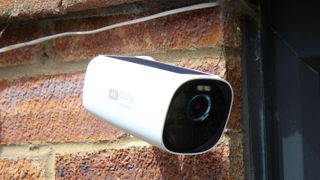
Specifications
Reasons to buy
Reasons to avoid
A costly investment we admit, but there is much to love about the Eufy eufyCam 3 S330. Its main selling points include solar power, so as long as you can position it where it will receive regular sunlight, you’ll never have to worry about changing or recharging batteries, and you can certainly forget about having to hardwire it to mains power – although you do need to power a HomeBase inside your home.
All recorded footage is stored locally too, so there’s no need for any extra subscriptions to pay for to access extra features, and it also benefits from AI smarts to recognise people that walk past its field of view. You can adjust settings to the point where the camera can notify you on your phone if certain people walk past, or whether it can trust them enough to not let you know they’re there.
Better still, video quality and sound quality is more than good enough to justify the price, and you may find that in the long run, the whole system will prove to be its weight in gold.
Read our full Eufy eufyCam 3 S330 review
How to choose the best home security camera for you
Start by determining whether you need a home security camera that is weatherproof and can be used outside or if you are looking for a smart security camera you can place inside your home.
You'll also need to consider how the camera is powered. Some need to be connected to mains power, which may mean you need to employ a professional to install it, whereas others are battery-powered. Look for home security cameras with swappable batteries, so you can purchase additional batteries and ensure the camera isn't out of action for several hours when the battery needs recharging.
The quality of the video the home security camera records is also essential. Many home security cameras record in Full HD, although some record in a higher resolution of 2k and 4k. While Full HD is sufficient for most homes, if you plan to mount the camera up high, its field of view covers a wide area. Higher resolution cameras will mean you can zoom into the footage and still pick out precise details such as car number plates.
Most home security cameras record footage in colour during the day, although it's in black and white at night. Some come with an LED that can be triggered when motion is detected to ensure footage recorded at night is in colour and as a way to scare off any would-be intruders. In addition, some home security cameras have built-in alarms triggered manually from the app or automatically when motion is detected to help deter intruders.
Many manufacturers now integrate with either Alexa and / or Google Assistant and Apple HomeKit. Ring, for example, only work with Alexa whereas Arlo work with Alexa, Google Assistant and HomeKit. This feature is useful if you want to speak with whoever is stood on your driveway (for example), without you having the select the notification on your phone. It's also another way to sync up with the other smart home devices in your ecosystem.
Finally, consider how video the camera captures is stored - does it require a subscription to save video in the cloud so it can go back and be reviewed after it has happened? Again, remember to factor in this cost. Some cameras offer local storage, so you don't have any ongoing costs associated with the camera, either in the form of memory built into the camera itself or the ability to add a micro SD card to the camera or base station.
How we test the best home security cameras
To ensure the home security cameras we’ve reviewed can be fairly compared, we’ve tested and analysed several crucial features covering style, performance, and practicalities.
We rated each camera on the quality of the footage it records during the day and in the dark, how clear the two-way talk features are, and the settings to arm and disarm the camera. In addition, for each model, we wanted to know how easy the setup and installation were, as well as how efficient the cameras were at delivering motion notifications and whether AI features were designed to identify if the activity has been created by a person, animal, vehicle, or another source, were accurate.
Where relevant, we compared the battery life of each model, and for cameras with lights and/or sirens, we also compared the brightness and loudness to see if they were sufficient. We also assessed each model for its durability and design, looking to see if it comes with handy mounting plates and the ability to adjust the camera angle to suit your home.
The best home security cameras in Australia: FAQ
What is a home security camera?
A home security camera offers a level of surveillance to your property whether you are at home, or away.
A smart home security camera works with an app which displays live and recorded footage, along with some other fancy features that enable you to engage with the person (or animal) inside and outside of the house.
The difference in price that you pay for is the quality of these features; you'll pay more to receive 4K footage, than full HD footage for example. You'll also pay more for color night vision, facial recognition and enhanced app features.
What type of home security camera do I need?
The two types of home security camera are those for outdoor or indoor use. Indoor cameras tend to be cheaper than outdoor cameras because they aren't geared up to brace the weather, and they won't have the longer battery-life which comes with the battery-powered outdoor camera.
Within those two types of security cameras are wired and battery-powered cameras. Wired security cameras would be best installed by a certified engineer, but you won't need to worry about recharging the batteries which can be a bit of a nuisance.
Do home security cameras need to be plugged in?
Not all models need to be plugged in when powering the best home security cameras. While there are plenty of mains-powered home security cameras on the market, suitable for indoors and outside, if you don't have access to a power socket where you want to install your home security camera, then fear not - there are many models that a rechargeable battery can power.
How long the battery lasts between charges will depend on how often the camera detects and records motion and how often the app is used to view the camera's live feed, but you can expect anywhere between one month and one year. Some home security cameras have swappable batteries, while others need to be removed completely to be recharged.
It's also worth noting that some home security cameras that offer a choice of power method may only provide certain features, such as activity zones, when used on mains power.
What's the difference between home security cameras and surveillance cameras?
Regarding securing your home, there are two options on the market; home security and surveillance cameras, also known as CCTV. So exactly how do they two differ?
Surveillance cameras have been around for decades, and see cameras are installed, usually on the property's exterior, although they can also be positioned inside. The cameras are connected to a central recorder by cables, and if you want to review the video, you'll need to connect the main recorder to a TV or monitor.
Surveillance cameras are more expensive than home security cameras. Usually, they require professional installation, but they ensure footage is captured without interference or the risk of a wireless connection failing or a camera battery running out. They also record everything and are only limited by the size of the central recorder, which is considerably larger than the capacity of a MicroSD card or the amount of secure online storage offered by home security cameras.
However, home security cameras are more affordable than CCTV and far easier to install. The footage is either stored on a MicroSD card inserted into the camera or base station - if the camera requires one - or in a secure area online, and you can review it from your smartphone or tablet, which means you don't need to find room for the central recorder and screen. However, most home security cameras don't record continuously, and if the internet connection drops, some cameras won't be able to record. Find out more about CCTV vs. smart home security cameras in our article.
Which security cameras work without a monthly fee?
Because many of the best home security cameras require a subscription fee to access all of the features, you should be careful not to purchase a device that doesn't do what you need it to without extra cost. Many cameras do, however, work brilliantly out of the box.
It's worth pointing out that almost all security cameras will work to a large extent without purchasing a subscription. Still, it's important to do your homework if there are particular features you want or need.
For more on how to keep home security costs down, take a look at our guide to creating a security system on a budget.
Can wireless security cameras work without the internet?
Home security cameras are often called wireless security cameras. Does that mean they require an internet connection to work? In most cases, they do. Unlike CCTV, which requires cables to be laid around your home, wireless security cameras need internet access so they can send a notification to your smartphone when motion is detected, as well as let you view a live feed from the camera no matter where you are.
While some home security cameras record footage to a MicroSD card inserted into the camera, others store it in a secure area online - something they can't do if they don't have a Wi-Fi or wired internet connection. However, some models, including the Google Nest Cam (battery), will store footage locally for a short period if the internet connection drops, transferring the videos to the cloud storage space when the Wi-Fi is reinstated.
Do home security cameras invade privacy?
Home security cameras are designed to capture what's going on in and around your property. In some cases, the ideal mounting position means that as well as your property falling within the camera's field of view, you may also capture the road, pavement, a neighbour's driveway, front door, windows, or even their backyard, for example.
The same privacy rules regarding CCTV apply to home security cameras. So, you should be taking adequate steps to protect the privacy of those around you, such as your neighbours.
If you find sections of their property fall within the field of view of your home security camera, re-position the camera so this is no longer the case. If that's not possible, activate any features the camera offers to block out sensitive areas while monitoring your driveway or back garden.
We'd recommend telling your neighbours about your security cameras while showing them precisely what is and isn't being monitored and recorded by the camera. Also, consider placing the signs and stickers which often come with security cameras in your window to make passers-by aware that they might be monitored or recorded. Finally, find out more in-depth on this subject by reading do home security cameras invade your privacy?
The latest updates to this home security camera guide
August 24th, 2023
Reformatted the entire buying guide to make recommendations clearer and more succinct.
Added new products and replaced older models with their newer versions.
- You've reached the end of the page. Jump back to the top ^
Get daily insight, inspiration and deals in your inbox
Get the hottest deals available in your inbox plus news, reviews, opinion, analysis and more from the TechRadar team.

James is a senior journalist with the TechRadar Australia team, covering news, analysis and reviews in the worlds of tech and the web with a particular focus on smartphones, TVs and home entertainment, AR/VR, gaming and digital behaviour trends. He has worked for over six years in broadcast, digital and print journalism in Australia and also spent time as a nationally recognised academic specialising in social and digital behaviour trends. In his spare time, he can typically be found bouncing between one of a number of gaming platforms or watching anything horror.
